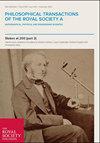Development, potential, and limitations of real–time online (pseudo–dynamic) testing
Philosophical Transactions of the Royal Society of London. Series A, Mathematical and Physical Sciences
Pub Date : 2001-09-15
DOI:10.1098/rsta.2001.0876
引用次数: 119
Abstract
This paper presents a test system for conducting online (pseudo–dynamic) tests on a real time–scale. A historical perspective is provided regarding the development of such testing, and a real–time online test system devised by the writer is introduced. The proposed system is characterized by (1) use of a digital signal processor now readily available; (2) adoption of the C language to ensure easy programming; and (3) separation of response analysis and displacement signal generation to allow the testing with complex structures. A five–storey base–isolated building model, treated as a six–degrees–of–freedom structure, was tested for various ground motions. The tests demonstrated that the system is able to simulate earthquake responses involving large displacements and velocities as well as complex numerical hystereses. Advantages and drawbacks of the real–time online test are discussed in reference to other experimental techniques: the quasi–static loading test using a predetermined loading history, the shaking–table test and the conventional quasi–static loading online test. Areas that require further research for advancement and refinement of the real–time online test are also noted.实时在线(伪动态)测试的发展、潜力和局限性
本文提出了一种实时在线(伪动态)测试系统。本文从历史的角度回顾了该测试的发展,并介绍了笔者设计的实时在线测试系统。所提出的系统的特点是:(1)使用现在容易获得的数字信号处理器;(2)采用C语言,保证编程容易;(3)将响应分析与位移信号生成分离,允许对复杂结构进行测试。一个五层的基础隔离建筑模型,作为一个六自由度的结构,测试了各种地面运动。试验表明,该系统能够模拟大位移、大速度以及复杂数值滞后的地震反应。参考其他实验技术:预先加载历史的准静态加载试验、振动台试验和传统的准静态加载在线试验,讨论了实时在线试验的优缺点。还指出了需要进一步研究以提高和改进实时在线测试的领域。
本文章由计算机程序翻译,如有差异,请以英文原文为准。
求助全文
约1分钟内获得全文
求助全文
来源期刊
自引率
0.00%
发文量
0

 求助内容:
求助内容: 应助结果提醒方式:
应助结果提醒方式:


